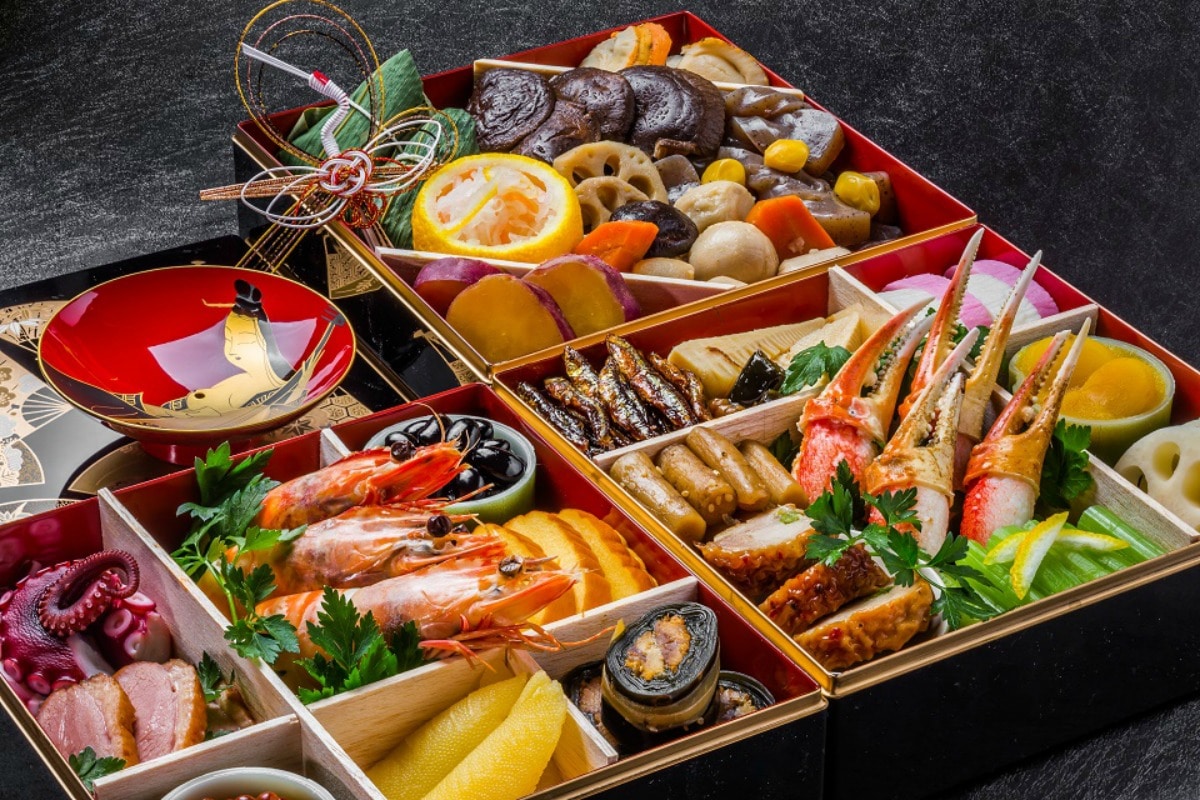Food is central to every holiday celebration and Japan is no exception. The fresh, seasonal ingredients, precise preparation and the complete visual aesthetic—color, balance and design—of traditional Japanese cuisine represent thousands of years of traditions, stories and symbolism. But it’s not just traditional Japanese foods that make this country a stand out in the world of cuisine. The Japanese are particularly adept at taking foods and traditions from other countries and turning them into something better.
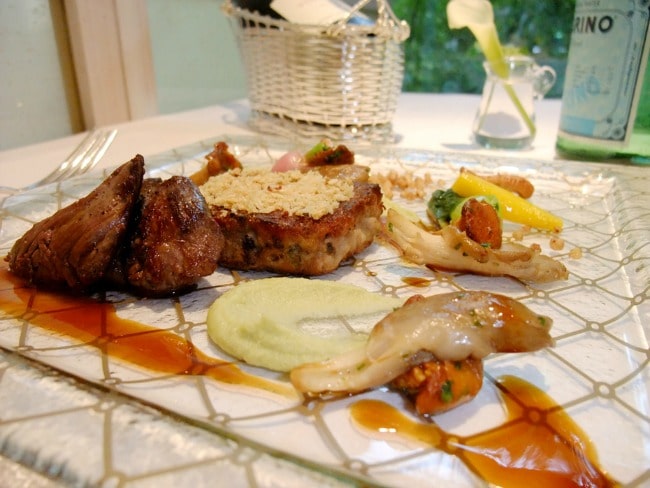
Photo by Tokyo Times
Nowhere is this more evident than in Tokyo where you’ll find every type of cuisine you could ever want—and an improved version of your favorites. The city of Tokyo has the most Michelin starred restaurants in the world: more than Paris and New York combined. It’s all here: French, Italian, the best steak houses in the world and more. In fact, more than a few people have told me the best Italian dinner they’ve ever eaten was in Tokyo.
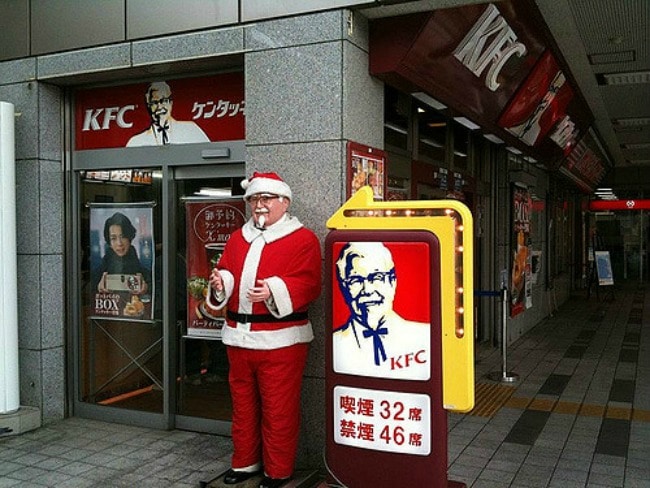
Photo by Ken Lee
With so many dining options, you’d expect all of the residents of Tokyo to celebrate the holidays with a dinner out. But in fact, on Christmas Eve you’ll find many families waiting in line for a bucket of Kentucky Fried Chicken. Capitalizing on the lack of turkey in Japan that caused visitors to seek out fried chicken as an alternative Christmas dinner, KFC launched a brilliant advertising campaign in the 1970s. As a result, “Sanders Claus” shows up each December and buckets of KFC are in such demand on Christmas Eve that Tokyo residents put in their orders as early as October. KFC’s in Tokyo even offer champagne and cake to go with their chicken. Obviously, Japan does KFC better than the USA.
But for couples, if your idea of a romantic Christmas dinner doesn’t include a bucket of crispy or original fried chicken, don’t worry, top restaurants throughout Tokyo offer everything for Christmas dinner.
While Christmas is not a national holiday in Japan, it’s celebrated with Santa hats, inflatable snowmen, gift giving and beautiful holiday lights and decorations throughout the city. It’s viewed more as a celebration of western culture than a holiday with religion at its core. And, like any good holiday, dessert is at the center of the celebration. In this case it’s the Japanese Christmas Cake.
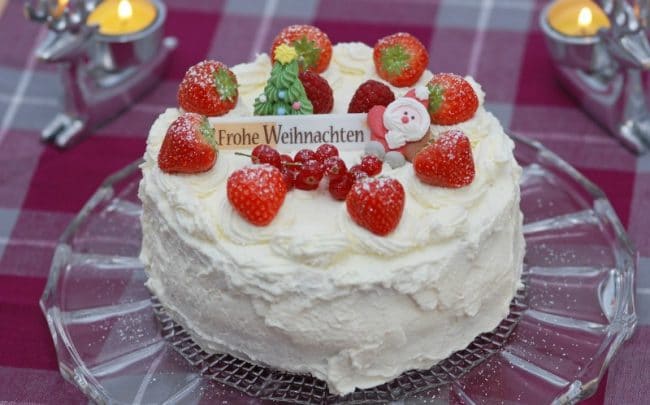
Photo by Bohnenhase
A sponge cake covered with snowy white whipped cream and adorned with a circle of perfectly shaped red strawberries—colors symbolic of the Japanese flag—the Japanese Christmas Cake became popular after World War II. At that time the Japanese embraced the ideals of American holiday celebrations as symbols of prosperity—including Santa Claus, Christmas decorations and sugar filled cakes.
Although sponge cake had been around in Japan since the 17th century, its primary ingredients—sugar, milk and butter—were only available for the wealthy. With the rebuilding of Japan’s economy, those items were more readily available and the Japanese Christmas Cake became a symbol of prosperity. Whether you realize it or not, you’ve seen this cake: it’s an emoji on your smartphone!
You’re going to need coffee to go with that cake and Tokyo’s exploding coffee culture has you covered. Coffee expert Eiichi Kunitomo believes coffee’s proper place is alongside fine dining. Having launched the hugely popular Tokyo café, Omotesando Koffee in 2011, he has since increased his contribution to Tokyo’s coffee scene. Closing the original location, he has progressed to phase two and three with the opening of Toranomon Koffee in Toranomon Hills and Koffee Mameya in the upscale, residential Setagaya neighborhood. Taking coffee to a higher level, Kunitomo’s trained baristas act as sommeliers matching customer taste preferences with perfect blends and roasts.
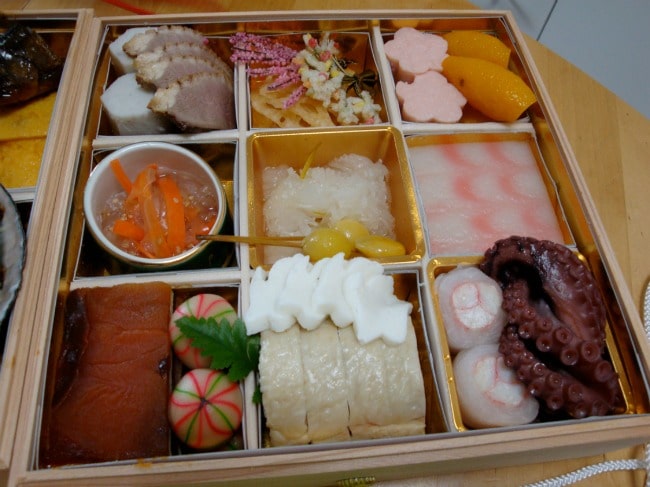
Photo by David Pursehouse
New Year’s is the most important holiday for the Japanese and comes with many traditions dating back a thousand years, including the eating of osechi ryori. Considered the most important meal of the year, osechi ryori is comprised of an array of colorful dishes packed together in boxes called jubako (resembling Bento boxes). According to tradition, nothing is to be cooked on New Year’s Day so osechi ryori is prepared in advance. Pre-made boxes are available everywhere from convenience stores like 7-Eleven to exclusive department stores to top restaurants. The colors and flavors are rich in symbolism and are believed to bring a new year filled with health, prosperity, bountiful harvests and even children to those who partake.
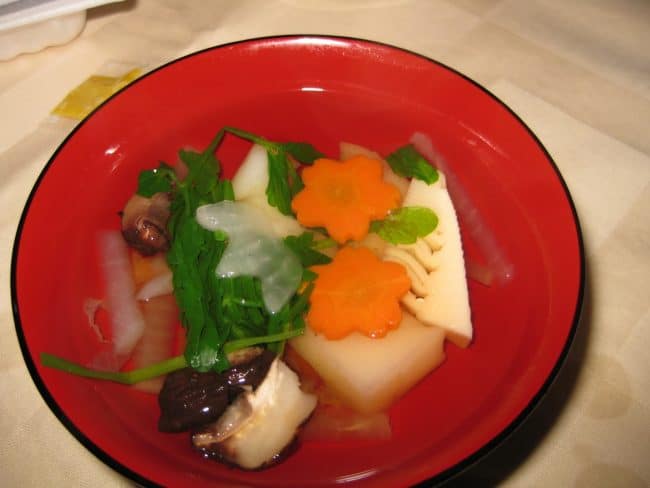
Another traditional New Year’s specialty is Ozoni, a soup containing mochi—boiled sticky rice that is mashed and formed into a white dumpling. The soup is eaten on New Year’s Day in the hopes of ringing in a good year.
Whether you’re visiting Tokyo for the holidays or throughout the year, you can rest assured you will eat well. Anthony Bourdain wrote of Tokyo in his “Parts Unknown” blog: “If I had to eat only in one city for the rest of my life, Tokyo would be it.”

